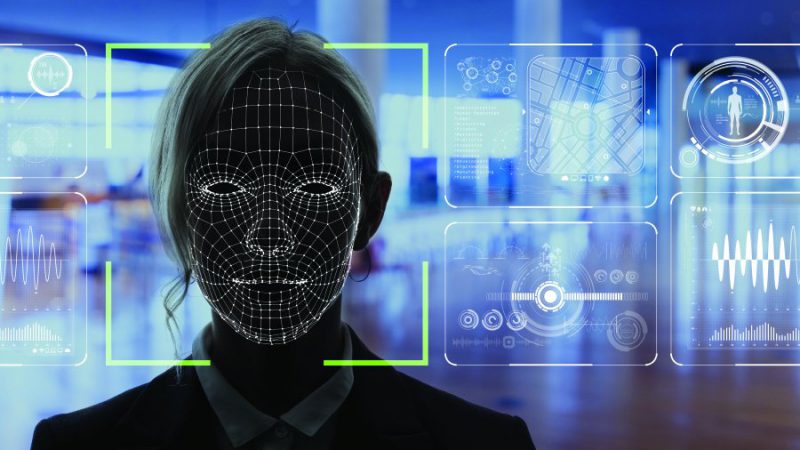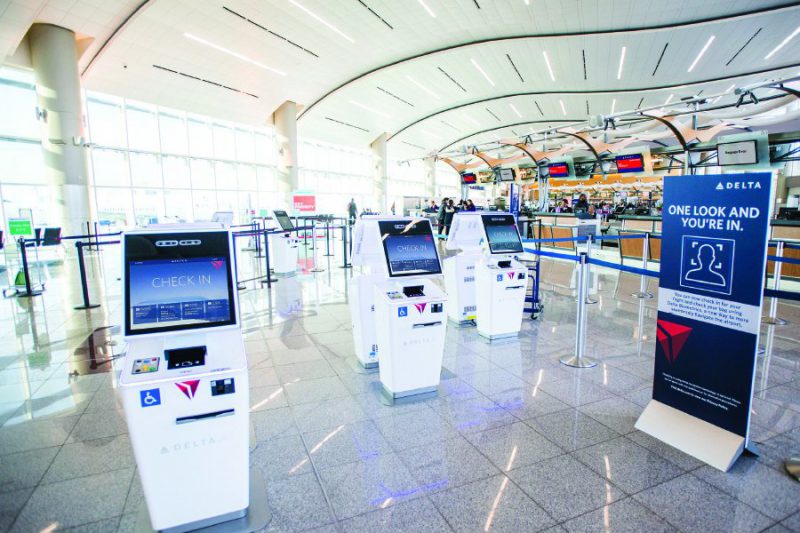Saving Face
Biometrics continue to smooth the flow of travelers as more airports adopt the science
March 29, 2020


Increasingly, inexorably, automation is on the rise at security checkpoints, arrival halls and departure gates in airports across the world. The reason is abundantly clear to anyone who travels with any regularity; screening areas are a constant source of traveler frustration, anxiety and, in too many cases, missed flights.
However technology may be turning the corner for the checkpoint experience. In fact, according to the J.D. Power 2019 North America Customer Airport Satisfaction Study, while overall customer satisfaction with North American airports rose only 1 point last year (primarily due to construction-related aggravation at most major airports), the experience of getting through airport security – a perennial drag on airport satisfaction scores – has improved 5 points.
The study credits the rising score to speedier TSA processing and more widespread adoption of biometric screening technologies that move passengers through security faster. And although civil liberties and privacy advocates continue to raise concerns about the amount of data being harvested, airlines, airports, technology providers and government authorities argue that strong technical security safeguards are in place and the amount of personally identifiable information used in the facial biometric process is limited.
Regardless, the trend seems set only to grow as a greater number of airports and airlines adopt these tools. Here are some of the latest updates from the field.
Delta Air Lines
Things have come a long way, and quickly, since Delta launched optional facial-recognition technology in Atlanta in 2018 after two years of testing. At the time, the airline touted it as the “first biometric terminal” in the country. Since then, the airline has expanded biometric boarding to Minneapolis, Salt Lake City, New York, Detroit and Los Angeles.

Houston Hobby Airport
In February, William P. Hobby Airport (HOU) launched Texas’s first full-fledge program to execute full biometric entry and exit for passengers who are traveling internationally. When international travelers arrive at the airport, they will pause for a photo at the primary inspection point. CBP’s biometric facial matching service will compare the new photo of the traveler to images that the traveler previously provided to the government, such as passport and visa photos.
If a traveler cannot be matched to a photo on record, the CBP officer will process the traveler manually. Travelers may opt out of the biometric process by notifying an officer as they approach the primary inspection point. They will then be required to present a valid travel document for manual identity verification by a CBP officer.
The enhanced entry process complements the biometric exit process that CBP, Houston Airports and Southwest Airlines introduced in November 2018. In 2017, George Bush Intercontinental Airport (IAH) was one of only three airports in the nation to deploy facial recognition technology when a pilot program for biometric exiting was launched.
CBP claims that it has used biometric facial comparison technology since September 2018 and has identified more than 250 imposters who tried to enter the United States by presenting a genuine travel document that belonged to another person.
United Airlines & CLEAR
In December, United Airlines launched CLEAR lanes at Chicago O’Hare International Airport, allowing travelers to skip airport lines with iris and fingerprint scans. CLEAR was initially available in both Terminal 1 and Terminal 2 in the next few weeks. After a one-time enrollment, CLEAR members can use the service at more than 60 locations nationally, including more than 30 airports.
United has made CLEAR membership complimentary for MileagePlus Premier 1K members; discounted pricing is available at varying rates for other Premier members, domestic United credit card holders and general MileagePlus members.
United has also made a strategic equity investment in CLEAR that will support the company’s growth, including bringing CLEAR to the airline’s hubs at Newark Liberty International Airport and Houston George Bush Intercontinental Airport.
According to news reports, Delta is also investing in a CLEAR partnership, although neither airline will say how much they are investing in the security identification firm.

NEC & Star Alliance
NEC Corporation and Star Alliance have recently announced a collaboration to develop a biometric data-based identification platform, specifically directed at frequent fliers on Star’s member airlines.
For passengers who choose the biometric option, every time they arrive at or depart from an airport where this technology is integrated, the biometric data lets them go through check-in kiosks, luggage drop, lounges, and even boarding the aircraft at the gate.
At the core of this process is an identity management system that is entirely secured. Passengers are likely to see the first results of this collaboration at a Star Alliance hub airport in the near future.
“Facial recognition is truly revolutionizing the airline industry and making flying more enjoyable, just as it was always intended,” said Takashi Niino, president and chief executive officer of NEC Corporation, in a statement.
American Airlines at DFW
Last year, American Airlines started tests of a biometric facial recognition technology for passenger boarding at Dallas Fort Worth International Airport, the carrier’s largest hub. Passengers on select international departures from DFW Terminal D can test the convenience of the boarding technology during the departure process.
Instead of scanning boarding passes, the one-step facial recognition program will scan and verify a customer’s identity against the passport photo already on file in an existing cloud-based CBP database. According to American, no customer biometrics records will be collected and stored.
American has also implemented a biometric boarding program at Los Angeles International Airport Terminal 4. The carrier will continue evaluating the program and its potential expansion to more locations and flights throughout its global network.
New York JFK Terminal One
Vision-Box and Terminal One Group Association have partnered to provide biometric technology at New York’s John F. Kennedy International Airport. Lufthansa is the launch carrier deploying the one-step paperless biometric boarding process at their largest US gateway. Air France, Japan Airlines, and Norwegian Airlines are expected to follow suit at the terminal that operates gates for some 22 international carriers.
With rising passenger volumes and demand for quicker and contactless processes, airports are increasingly turning to biometrics as a prime solution. Airlines say they can enplane up to 500 passengers in under 20 minutes, using facial recognition to replace passport and boarding pass checks.
The Vision-Box boarding solution is certified by the Privacy-by-Design seal, which means that personal biographic and biometric data is managed by an audited and certified software platform designed for maximum protection. No personal data or images is stored by private entities but the US government does maintain the US departure information.
The boarding solution was fast-tracked for use by CBP’s Biometric Exit program. Within the next four years, it is expected that CBP’s Biometric Exit technology will cover more than 97 percent of departing commercial air travelers.




